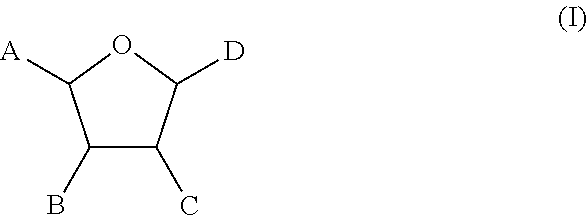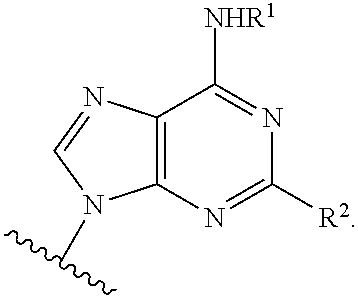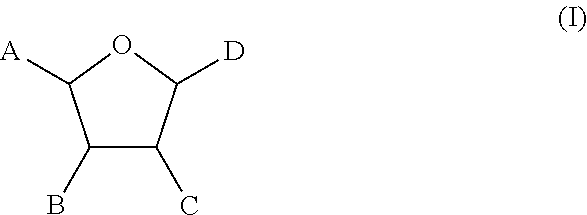Method of providing ocular neuroprotection
a neuroprotection and ocular technology, applied in the field of providing ocular neuroprotection, can solve the problems of poor ocular tolerability, high side effects of therapy, vision loss and blindness, etc., and achieve the effect of preventing, reducing or treating retinal ganglion cell damag
- Summary
- Abstract
- Description
- Claims
- Application Information
AI Technical Summary
Benefits of technology
Problems solved by technology
Method used
Image
Examples
example 1
Evaluation of Neuroprotective Effects of Compound A and Brimonidine on Ischemia-Induced Retinal Ganglion Cell Death in Long-Evans Rats
[0158]Treatment groups of 10 male Long Evans rats, six to eight weeks of age, were anesthetized by i.p. injection of a combination of ketamine (80 mg / kg) and xylazine (8 mg / kg). Additional ketamine was administered as needed to maintain appropriate anesthetic depth, and body temperature was maintained by use of an isothermal pad placed under the animal. Once under anesthesia, topical anesthetic (0.5% proparacaine hydrochloride, single drop) was applied to the cornea of the right eye. Five minutes after application of topical anesthetic, a single drop of treatment (0.2% brimonidine tartrate, Compound A 2.5% ophthalmic suspension, or Compound A vehicle) was applied to the cornea, with a second drop administered 5 minutes after the first. Several minutes after the second treatment, the anterior chamber of the right eye was cannulated with a 30G needle co...
example 2
Compound Synthesis
2′,3′-Isopropylidene-N6-cyclohexyladenosine
[0166]A solution of 6-chloroadenosine (2.58 g) and cyclohexylamine (5 g) in ethanol (20 ml) was heated at reflux for 6 hours then cooled to room temperature. The reaction mixture was concentrated in vacuo and the resultant residue was diluted with water (50 ml) and ethyl acetate (300 ml). The organic layer was separated and the aqueous layer was extracted with ethyl acetate (2×50 ml). The combined organic layers were washed with water (1×30 ml), dried over sodium sulfate, concentrated in vacuo and dried under vacuum to provide N6-cyclohexyladenosine as a white solid (2.600 g). N6-Cyclohexyladenosine (2.6 g) was diluted with acetone (30 ml) and to the resultant solution was added 2,2-dimethoxypropane (12 ml), followed by D-camphorsulphonic acid (3.01 g) and the mixture was allowed to stir at room temperature for 18 hours. The reaction mixture was concentrated in vacuo and the resultant residue was diluted with ethyl acetate...
example 3
Binding Studies
Cell Culture and Membrane Preparation
[0182]CHO cells stably transfected with human adenosine A1 receptor are grown and maintained in Dulbecco's Modified Eagles Medium with nutrient mixture F12 (DMEM / F12) without nucleosides, containing 10% fetal calf serum, penicillin (100 U / mL), streptomycin (100 μg / mL), L-glutamine (2 mM) and Geneticin (G-418, 0.2 mg / mL; A2B, 0.5 mg / mL) at 37° C. in 5% CO2 / 95% air. Cells are then split 2 or 3 times weekly at a ratio of between 1:5 and 1:20.
[0183]Membranes for radioligand binding experiments are prepared from fresh or frozen cells as described in Klotz et al., Naunyn-Schmiedeberg's Arch. Pharmacol., 357:1-9 (1998). The cell suspension is then homogenized in ice-cold hypotonic buffer (5 mM Tris / HCl, 2 mM EDTA, pH 7.4) and the homogenate is spun for 10 minutes (4° C.) at 1,000 g. The membranes are then sedimented from the supernatant for 30 minutes at 100,000 g and resuspended in 50 mM Tris / HCl buffer pH 7.4 (for A3 adenosine receptors...
PUM
| Property | Measurement | Unit |
|---|---|---|
| Fraction | aaaaa | aaaaa |
| Fraction | aaaaa | aaaaa |
| Pressure | aaaaa | aaaaa |
Abstract
Description
Claims
Application Information
 Login to View More
Login to View More - R&D
- Intellectual Property
- Life Sciences
- Materials
- Tech Scout
- Unparalleled Data Quality
- Higher Quality Content
- 60% Fewer Hallucinations
Browse by: Latest US Patents, China's latest patents, Technical Efficacy Thesaurus, Application Domain, Technology Topic, Popular Technical Reports.
© 2025 PatSnap. All rights reserved.Legal|Privacy policy|Modern Slavery Act Transparency Statement|Sitemap|About US| Contact US: help@patsnap.com



